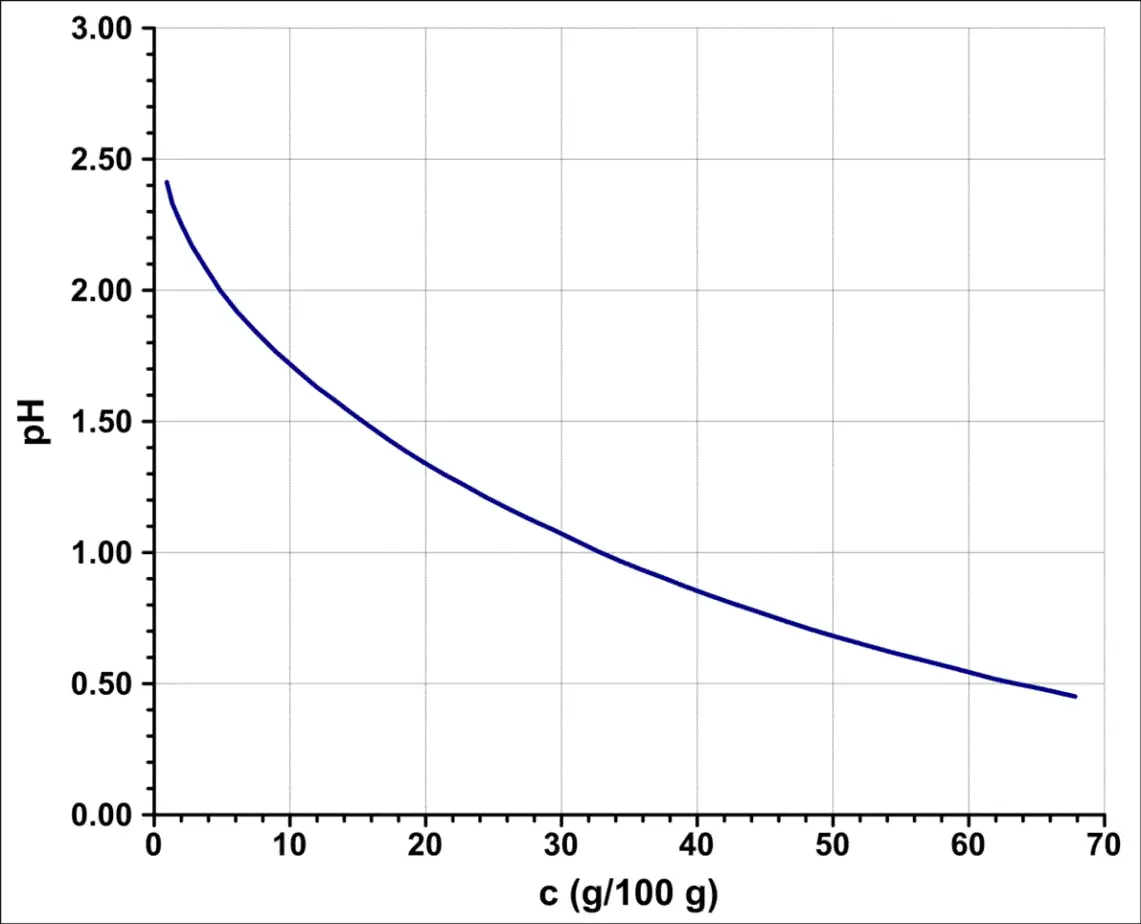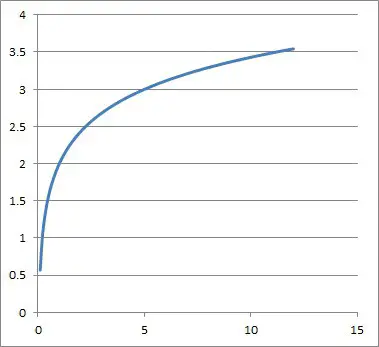Logarithms are used often in math and science (such as chemistry), but they are really just another way to talk about exponents. Sometimes, we need to solve for the base of a logarithm in an equation or on a graph.
So, how do you find the base of a logarithm? To find the base of a logarithm from an equation, use the log rules and the formula to convert from logarithm form to exponential form. To find the base of a logarithm from a graph, find two test points (x and y values) and solve a simultaneous system of equations.
Of course, there are also ways to change the base of a logarithm if you want to use a base of 2, 10, or the natural base e ~ 2.718.
In this article, we’ll talk about how to find the base of a logarithm in an equation or from a graph. We’ll also talk about the rules of logarithms and how to convert from logarithm form to exponential form.
Let’s get started.
How To Find The Base Of A Logarithm
To find the base of a logarithm from an equation, it helps to be familiar with the rules of logarithms. Knowing some of the powers of common bases (such as 2, 3, 4, 5, etc.) is also helpful in solving these equations.

Logarithms with bases of 10, 2, and e ~ 2.718 are common, but there is an unlimited supply of bases to choose from. When solving for the base of a logarithm, it helps to know how to convert a logarithmic equation to an exponential equation, so we’ll start with that concept.
How To Convert Log To Exponential
Remember that a logarithm is just another way of talking about exponents. In fact, we can convert between the two forms with this relationship:
- BE = N <–> logB(N) = E [for B > 0, N > 0, and B not equal to 1]
where B is the base of the logarithm and the exponential, E is the exponent, and N is the number (the argument of the logarithm).

Let’s take a look at some examples of how to convert logarithmic equations to exponential equations.
Example 1: Convert Log To Exponential
Let’s say we have the following logarithmic equation:
- log3(x) = 4
In this case, we have B = 3, E = 4, and N = x.
Converting to exponential form, we get:
- 34 = x
Now that we have converted to exponential form, we can solve to get x = 81.
Example 2: Convert Exponential To Log
Let’s say we have the following exponential equation:
- 5x = 125
In this case, we have B = 5, E = x, and N = 125.
Converting to logarithmic form, we get:
- log5(125) = x
We can find x = 3 using a calculator and a change of base (more on this later), or we can recognize that 125 is a power of 5: specifically, 53 = 125.
Log Rules
There are a few rules of logarithms that will make it easier for us to solve logarithmic equations:
- logB(xy) = logB(x) + logB(y) [logarithm of product equals sum of logarithms of factors]
- logB(x / y) = logB(x) – logB(y) [logarithm of quotient equals difference of logarithms of numerator and denominator]
- logB(xp) = plog(x) [logarithm of x to a power of p equals p times the logarithm of x]
Let’s take a look at some examples to make the concepts clear.
How To Find The Base Of A Logarithmic Equation
To find the base of a logarithmic equation, use the log rules along with the formula to convert logarithms to exponents.
Example 1: Find The Base Of A Logarithmic Equation
Let’s say we have the following logarithmic equation:
- logB(2) + logB(8) = 4
Note that the two logarithm terms on the left side have the same base of B. We can use the first logarithm rule listed above to rewrite the left side as:
- logB(2*8) = 4 [log rule: logB(xy) = logB(x) + logB(y)]
- logB(16) = 4
Now we use the formula to convert a logarithmic equation to an exponential equation:
- B4 = 16 [BE = N <–> logB(N) = E]
- B = 2 [16 is 2 raised to the 4th power]
Note that we could also use the third log rule listed above to find B:
- logB(16) = 4
- logB(24) = 4 [16 = 24]
- 4logB(2) = 4 [logB(xp) = plog(x)]
- logB(2) = 1
- B1 = 2
- B = 2
Note that we still had to recognize that 16 = 24. When working with logarithms, it helps to brush up on your knowledge of powers of 2, 3, 4, 5, etc. so you can recognize them when you see them.
Example 2: Find The Base Of A Logarithmic Equation
Let’s say we have the following logarithmic equation:
- logB(8x + 16) – logB(x + 2) = 3
Note that the two logarithm terms on the left side have the same base of B. We can use the second logarithm rule listed above to rewrite the left side as:
- logB((8x + 16) / (x + 2)) = 3 [logB(x / y) = logB(x) – logB(y)]
- logB((8(x + 2)) / (x + 2)) = 3 [8x + 16 = 8(x + 2)]
- logB(8) = 3 [cancel x + 2 in numerator and denominator]
Now we use the formula to convert a logarithmic equation to an exponential equation:
- B3 = 8 [BE = N <–> logB(N) = E]
- B = 2 [since 8 = 23]
How To Find The Base Of A Log From A Graph
To find the base of a log from a graph, we can take the following steps:
- 1.) Find two test points on the graph
- 2.) Set up two equations: one for each test point.
- 3.) Solve the two equations simultaneously as one system.
Let’s look at an example to see how this would work.
Example: Find The Base Of A Log From A Graph
Let’s say we have the following graph, with the points (5, 3) and (25, 4).

If the graph has equation y = logB(x) + K, then the two equations would be:
- 3 = logB(5) + K
- 4 = logB(25) + K
To solve this system, solve both equations for K and set them equal:
- K = K
- 3 – logB(5) = 4 – logB(25)
- logB(25) – logB(5) = 4 – 3 [collect like terms on both sides]
- logB(25 / 5) = 1 [rule of logs: logB(x / y) = logB(x) – logB(y)]
- logB(5) = 1
- B1 = 5
- B = 5
Now that we have found B = 5, we can substitute back into either of the original equations to find K. We’ll use the first one:
- 3 = logB(5) + K
- 3 = log5(5) + K [substitute B = 5]
- 3 = 1 + K [logB(B) = 1 for any B > 0]
- 2 = K
So, our full logarithmic equation from this graph is:
- y = logB(x) + K
- y = log5(x) + 2

Logarithm Base Change Formula
The logarithm change of base formula allows us to switch from one base B to another. Here is the logarithm change of base formula:
- logB(N) = logC(N) / logC(B)
Example 1: How To Convert Ln To Log Base 10
Let’s say we have the logarithmic expression loge(100), and we want to convert it to a logarithm with a base of 10.
In this case, B = e, N = 100, and C = 10. Using these in the logarithm change of base formula gives us:
- logB(N) = logC(N) / logC(B)
- loge(100) = log10(100) / log10(e)
- loge(100) = 2 / log10(e) [log10(100) = 2,since 102 = 100]
Example 2: How To Convert Log To Ln
Let’s say we have the logarithmic expression log10(400), and we want to convert it to a logarithm with a base of e (also known as ln or natural logarithm).
In this case, B = 10, N = 400, and C = e. Using these in the logarithm change of base formula gives us:
- logB(N) = logC(N) / logC(B)
- log10(400) = loge(400) / loge(10)
- log10(400) = loge(4*10*10) / loge(10) [since 400 = 4*10*10]
- log10(400) = (loge(4) + loge (10) + loge (10)) / loge(10) [logB(xy) = logB(x) + logB(y)]
- log10(400) = (loge(4) / loge(10)) + 2
Conclusion
Now you know how to find the base of a logarithm, either in an equation or from a graph. You also know how to make a change of base and convert between common logarithms.
You can learn more in my article on logarithmic functions or my article on when log is negative.
I hope you found this article helpful. If so, please share it with someone who can use the information.
Don’t forget to subscribe to my YouTube channel & get updates on new math videos!
~Jonathon



